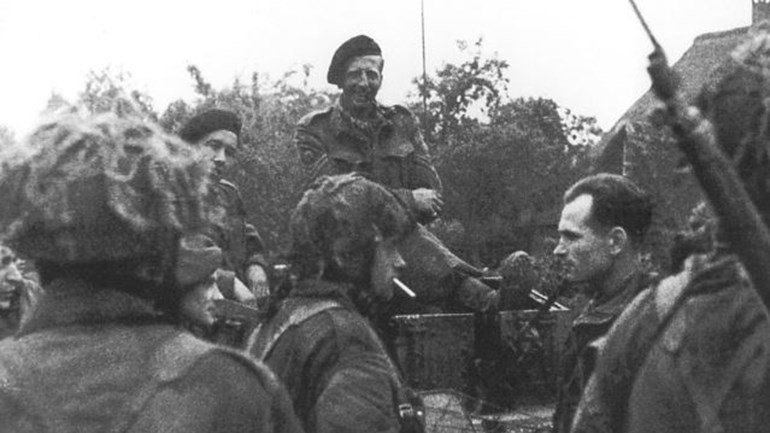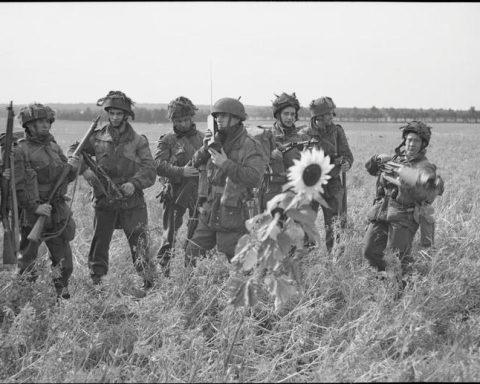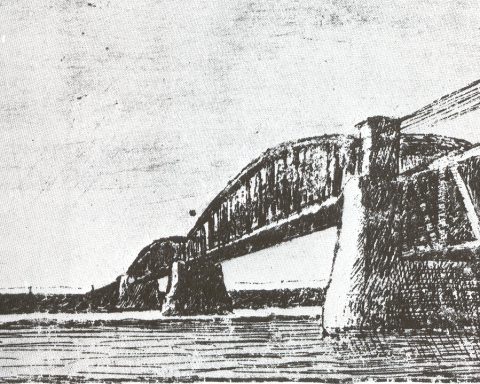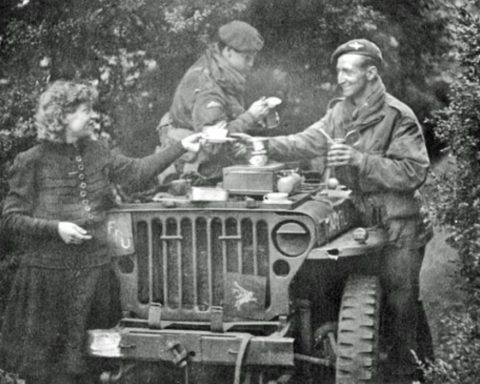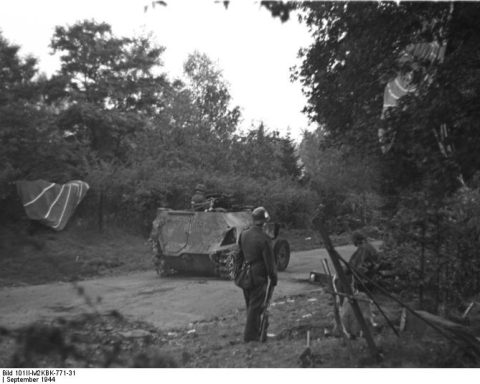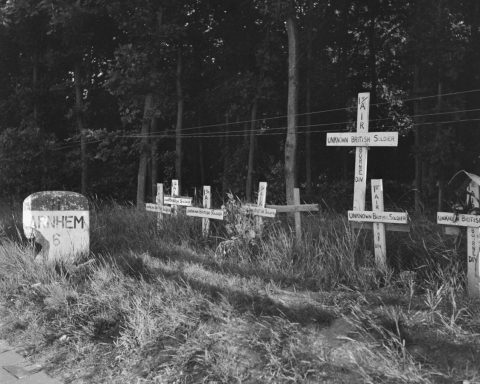The 950 Polish paratroopers who had landed at Driel were originally all going to be transferred via the Driel ferry to strengthen the British positions in Oosterbeek. But while the Poles were on their way to the Netherlands in their planes on Thursday, September 21, the Germans managed to capture the landing place on the north side of the Rhine in an attack on the Westerbouwing.
On Thursday night an attempt had been made to build rafts to cross the river that way, but that had failed. With no way to cross the river, the Poles were stuck at Driel after their landing, much to the frustration of the Polish general Sosabowski.
The Poles had taken up a defensive position, where on the morning of Friday, September 22, they were confronted with a cautious German attack from Elden with tanks.
After the large number of tanks that the Germans had lost to the British paratroopers in Arnhem and Oosterbeek, the Germans had come to respect the PIAT anti-tank rifles of the airborne troops. After the Polish paratroopers fired a few shots at the Germans with their PIAT, the Germans stopped their attack.
Almost at the same time, two British Daimler scout cars from an Allied reconnaissance unit managed to reach Poland from the south. The ground troops of XXX Corps were still trapped at Lent on the north side of Nijmegen, but the reconnaissance unit had sneaked past German positions near Oosterhout that morning.
Charles Mackenzie, General Urquhart’s chief of staff in Oosterbeek, had relayed a message via the radio in one of the scout cars about the dire situation in which the Airborne Division in Oosterbeek found itself. XXX Corps responded that they would do everything they could to reach the south bank of the Rhine that day. To transfer the Poles, a few DUKW amphibious vehicles would be sent to Driel.
Yet it took almost all day on Friday, September 22, before the ground troops managed to find a way to the north. The Germans were well dug in and the Allied tanks were vulnerable to German anti-tank guns in the open Dutch polder land.
Yet around five o’clock that afternoon the first two British tanks managed to reach the Poles. The tanks were both immediately seriously damaged because they hit a mine that had been placed on the road by the Poles to stop any German tanks.
The relationship between the Poles and the British was not that good. This incident did not improve relations.
DUKW amphibious vehicles
XXX Corps had also sent two DUKW amphibious vehicles forward and they arrived in Driel at the beginning of the evening. The first Poles immediately prepared to cross to Oosterbeek. We waited until it was dark before the crossing began.
Because the Westerbouwing was now in German hands, it was decided to cross the amphibious vehicles east of the entrance to the Driel ferry. Here, however, both amphibious vehicles got stuck in a deep ditch between the dike and the river. The amphibious vehicles appeared to have no way of moving.
With the amphibious vehicles also useless, the Poles were left to a few small rubber boats to make the crossing. Only one soldier could be transferred per crossing. All in all, that night we managed to transfer 52 Poles to the north side of the river. A number of Poles decided to make the crossing by swimming, but a few soldiers drowned and other soldiers ended up in German-held territory due to the current of the river.
That day, General Urquhart had given the order to investigate whether it was possible to conquer the Westerbouwing. However, Major Breeze, who should have carried out the attack, convinced Urquhart not to do so.
“The men are exhausted and even if we managed to occupy high ground, we would probably be thrown out again quickly due to lack of manpower.”
And so Friday, September 22, ended not much better than the day before. The British held out in Oosterbeek and the Allies were on the south side of the Rhine, but the river was an obstacle so the British in Oosterbeek were still largely on their own.

